Background
After their victory at the Battle of Pangal, the Loyalist forces, composed of approximately 2,400 guerrilla and Mapuche Allies under the command of Vicente Benavides, decided to attack and destroy the city of Los Angeles. This city was defended by around 400 line soldiers under the command of Marshal Pedro Andrés del Alcázar, and had already survived four attempts by the same enemy.
At this juncture, Marshal del Alcázar received forged orders from General Ramón Freire to evacuate the city and move his forces to reinforce Chillán and meet with the main Army that was operating out of Concepción. Marshal del Alcázar, ignorant of the defeat suffered by the Patriot army at Pangal decided to evacuate the city, taking with him all the inhabitants, who otherwise would have been massacred by the guerrillas. He left the city on the 25th at the head of the Cazadores de Coquimbo battalion, 50 artillery troops, approximately 150 friendly Mapuche allies and about a thousand civilians, with their properties and animals. The long train made for a very slow speed.
The battle
As he was crossing the Laja River at the Tarpellanca ford, early on the morning of the 26th, the column was attacked by the troops of Benavides at the point where the river branched into two inlets leaving an islet in the middle. Marshal del Alcázar and almost all of his column were trapped there at the islet. A defense was hastily organized by making a circle out of the carts, but after 13 hours of battle, just as night was falling, the patriots started to run out of ammunition.
In order to try to save the many civilians that were traveling with his column, he decided to negotiate with Benavides. The Patriots surrendered in exchange for their lives and free passage for all the civilians, while Marshal del Alcázar and his officers were to remain as hostages and the surviving soldiers were to incorporate themselves to the guerrilla. The final truce was agreed at 2AM on the 27th.
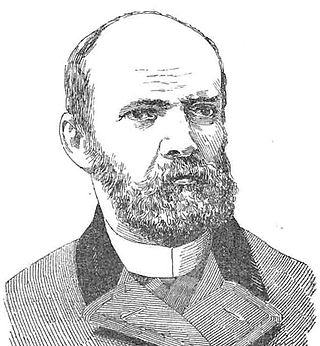
Diego Jacinto Agustín Barros Arana was a Chilean professor, legislator, minister and diplomat. He is considered the most important Chilean historian of the 19th century. His main work General History of Chile is a 15-volume work that spanned over 300 years of the nation's history.
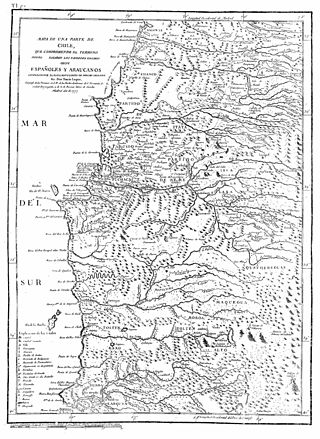
The Arauco War was a long-running conflict between colonial Spaniards and the Mapuche people, mostly fought in the Araucanía region of Chile. The conflict began at first as a reaction to the Spanish conquerors attempting to establish cities and force Mapuches into servitude. It subsequently evolved over time into phases comprising drawn-out sieges, slave-hunting expeditions, pillaging raids, punitive expeditions, and renewed Spanish attempts to secure lost territories. Abduction of women and war rape was common on both sides.

The Chilean War of Independence was a military and political event that allowed the emancipation of Chile from the Spanish Monarchy, ending the colonial period and initiating the formation of an independent republic.

Francisco Casimiro Marcó del Pont y Ángel was a Spanish soldier and the last Governor of Chile. He was one of the main figures of the Chilean independence process, being the final Spaniard to rule as Royal Governor of Chile from 1815 to 1817, when he was deposed and captured by the patriot forces after the Battle of Chacabuco.
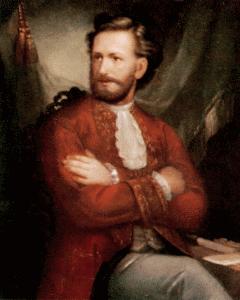
Gabriel Cano de Aponte was a Spanish soldier who served as Royal Governor of Chile from 1717 to 1733. His administration was the longest of all Colonial Governors and the second longest in the history of Chile after the administration of General Augusto Pinochet, who surpassed him by some eight months.
The Piuchén is a creature from the Mapuche mythology and Chilote mythology pertaining to southern Chile, a much feared shapeshifting creature that can instantly change into animal form. According to legend, the Piuchén takes the hearts of its victims without leaving a mark on the body.
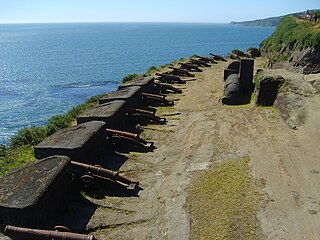
The Fort System of Valdivia is a series of Spanish colonial fortifications at Corral Bay, Valdivia and Cruces River established to protect the city of Valdivia, in southern Chile. During the period of Spanish rule (1645–1820), it was one of the biggest systems of fortification in the Americas. It was also a major supply source for Spanish ships that crossed the Strait of Magellan.
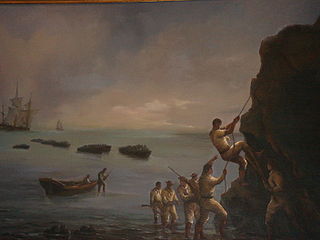
The Capture of Valdivia was a battle in the Chilean War of Independence between Royalist forces commanded by Colonel Manuel Montoya and Fausto del Hoyo and the Patriot forces under the command of Thomas Cochrane and Jorge Beauchef, held on 3 and 4 February 1820. The battle was fought over the control of the city Valdivia and its strategic and heavily fortified harbour. In the battle Patriots gained control of the southwestern part of the Valdivian Fort System after an audacious assault aided by deception and the darkness of the night. The following day the demoralised Spanish evacuated the remaining forts, looted local Patriot property in Valdivia and withdrew to Osorno and Chiloé. Thereafter, Patriot mobs looted the property of local Royalists until the Patriot army arrived to the city restoring order.

The Battle of Concepción was fought between Chilean and Peruvian forces on July 9 and July 10, 1882, during the Sierra Campaign of the War of the Pacific. Heavily outnumbered, the Chilean detachment of 77 men under the command of Captain Ignacio Carrera Pinto was annihilated by a 1,300-strong Peruvian force, many of them armed with spears, commanded by Col. Juan Gasto and Ambrosio Salazar after a 27-hour fight in the small town of Concepción in the Peruvian Andes.

Fernando Alegría was a Chilean poet, writer, literary critic and scholar.
Marshal Pedro Andrés del Alcázar y Rodríguez de Zapata was a Spanish and later Chilean Army officer and hero of the Chilean War of Independence.
The Battle of Pileu was a minor engagement that took place between the forces of the nascent Chilean Army and Spanish royalist guerrillas, in the context of the guerra a meurte campaign, during the later stages of the Chilean War of Independence, and resulted in a Royalist victory.
Vicente San Bruno Rovira was a Spanish military officer, infamous for his cruelty during the Chilean War of Independence.

Vicente Benavides Llanos was a Chilean soldier who fought in the Chilean War of Independence. He is best known for leading Royalists guerrillas in La Frontera during the last years of the war.
Antonio de Guill y Gonzaga was a Spanish colonial administrator who served as Royal Governor of Panama and Royal Governor of Chile.

The Chilean Declaration of Independence is a document declaring the independence of Chile from the Spanish Empire. It was drafted in January 1818 and approved by Supreme Director Bernardo O'Higgins on 12 February 1818 at Talca, despite being dated in Concepción on 1 January 1818. The ceremony of independence was performed on 12 February 1818, the first anniversary of the Battle of Chacabuco.

Guerra a muerte is a term coined by Benjamín Vicuña Mackenna and used in Chilean historiography to describe the irregular, no-quarter warfare that broke out in 1819 during the Chilean War of Independence.

Luis Muñoz de Guzmán was a Spanish colonial administrator who served as Royal Governor of Quito and Royal Governor of Chile.
Editora Nacional Quimantú was a Chilean publishing house created in 1971 by Salvador Allende's Unidad Popular government. It was founded under the premise of offering various literary works and a view of Chilean culture not covered by the "official bourgeois tradition" by then, at an accessible price for the country's working class. Quimantú is mapuche for "sun of knowledge".

Elisa Berroeta Araya was a Chilean 20th-century engraver, illustrator, and visual artist. She is known as one of the first female artists awarded scholarships by the Chilean government for studies in Europe.












